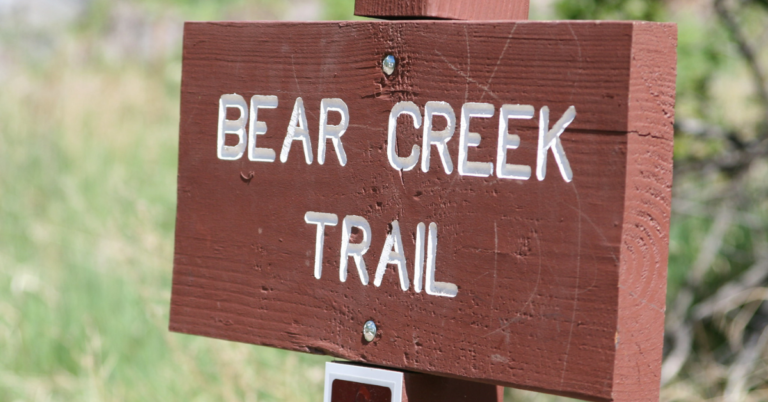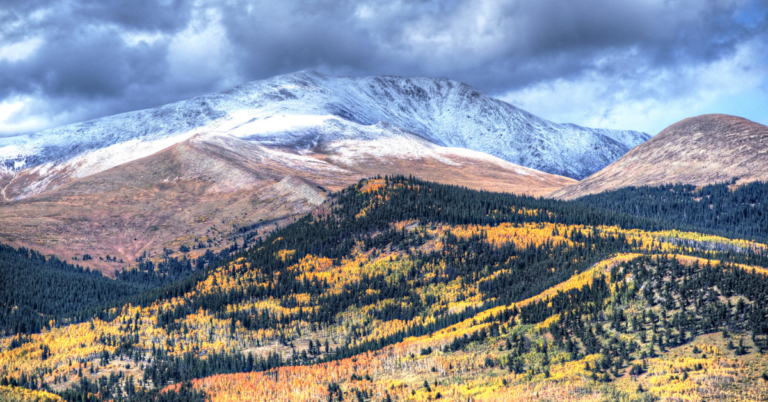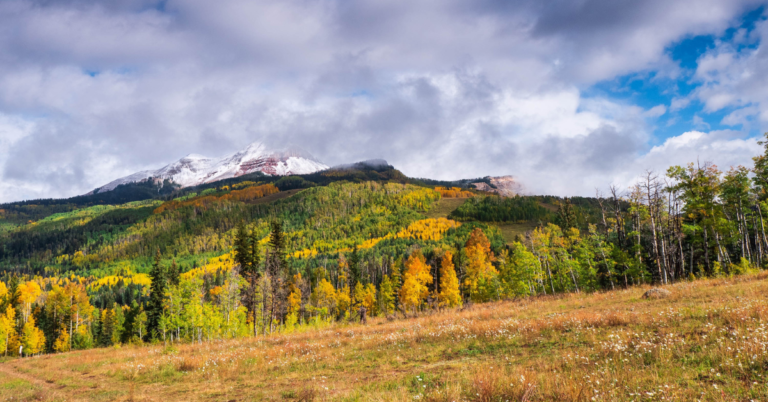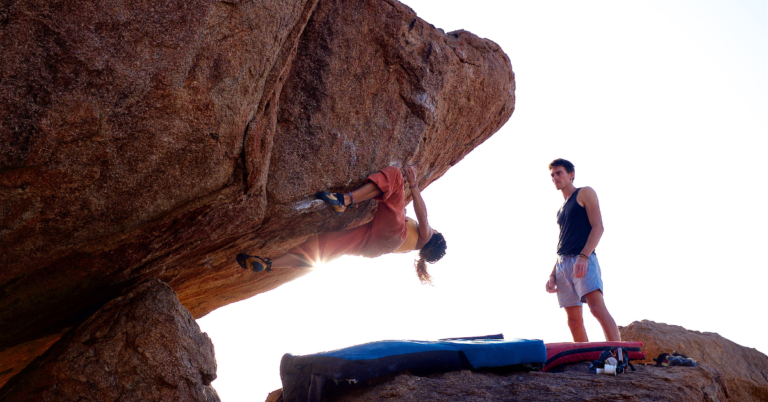Welcome to the vast wilderness of Colorado, a haven for adventurers and nature enthusiasts alike. Expansive forests, basins, mountains, and valleys might seem like a blessing, but it’s got one big downside—discovering the best backpacking trips in Colorado can feel like finding a needle in a haystack.
There’s so much to do, so much to see, but you likely only have a weekend (or maybe two) to venture out into the unknown and camp beneath the peaks and stars. You can’t afford to waste time on so-so trips or overcrowded backpacking areas—you need the best of the best.
As a Colorado local deeply passionate about hiking, peakbagging, and backpacking, I’m here to be your guide to the best backpacking trips in Colorado.
Whether you’re a seasoned backpacking veteran or a curious first-timer eager to embrace the great outdoors, this article is your compass to discovering the hidden gems and iconic trails that define Colorado’s backpacking world.
Know-Before-You-Go Colorado Backpacking
Before you lace up your shoes and fill up your pack, there are a few things you need to know about backpacking in Colorado:
- Check the Weather: Colorado’s weather can be unpredictable, especially in the mountains. Be sure to check the forecast for your planned route and pack accordingly.
- Permits and Regulations: Research and obtain any necessary permits or passes required for the specific areas you plan to visit.
- Altitude and Acclimatization: Many backpacking routes in Colorado traverse high elevations. Give yourself time to acclimate to the altitude before attempting strenuous hikes.
- Navigation: Bring a detailed map and a reliable compass or GPS device. Familiarize yourself with the route beforehand and know how to use your navigation tools effectively.
- Wildlife Awareness: Colorado is home to various wildlife species, including bears, mountain lions, and rattlesnakes. Learn about the wildlife in the area you’ll be exploring, and take necessary precautions to store food properly and avoid potentially dangerous encounters.
- Water Sources: Research water sources along your route and plan accordingly. Carry a water purification method to ensure safe drinking water throughout your backpacking trip.
- Emergency Communication: Ensure you have a reliable means of communication, such as a satellite phone or a personal locator beacon (PLB), in case of emergencies.
- Bury Waste Properly: Practice Leave No Trace principles, including burying human waste at least 200 feet from water sources and using biodegradable soap sparingly.
- Campsite Selection: Choose established campsites whenever possible, and avoid camping near fragile vegetation or water sources.
- Campfire Regulations: Be aware of fire restrictions in the area and use a camp stove for cooking instead of making open fires.
Best Backpacking Trips and Trails in Colorado
It’s hard to narrow it down when choosing the best backpacking trips in Colorado, so I decided to describe a diverse set of options. From high-altitude passes to remote wilderness treks, you have plenty of opportunities for backpacking in Colorado.
Here’s a taste of my favorites.
1. Chicago Basin, Weminuche Wilderness
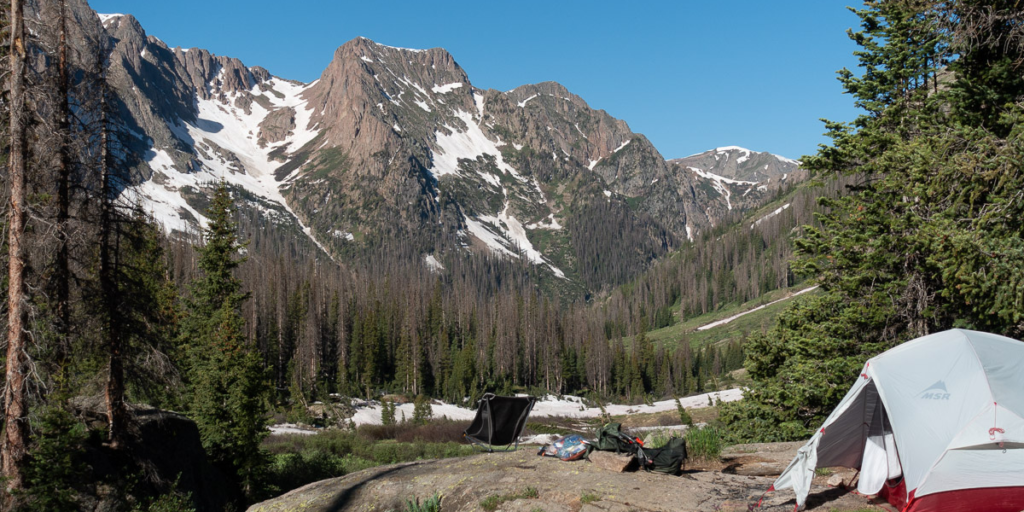
Backpacking in Chicago Basin is a dream come true. Imagine…
- Waterfalls
- Massive peaks
- Rushing rivers
- Fields of wildflowers
- Alpine lakes
- Wildlife
Check, check, check—Chicago Basin has it all.
Accessing Chicago Basin requires a journey that begins with the historic Durango & Silverton Narrow Gauge Railroad. Starting from Durango, Colorado, the scenic train ride takes you deep into the wilderness, passing through breathtaking landscapes of towering peaks and cascading rivers. The train drops off hikers at the Needleton stop, the gateway to Chicago Basin.
From Needleton, the real adventure begins with a hike along the Animas River. The trail starts pretty mellow before climbing up into the beautiful Chicago Basin.
Chicago Basin is famous for being home to not one but four stunning fourteeners (mountains with peaks over 14,000 feet):
- Sunlight Peak (14,059 ft)
- Windom Peak (14,082 ft)
- Mount Eolus (14,083 ft)
- North Eolus (14,039 ft)
Each peak presents its own set of challenges and rewards for hikers and mountaineers. Windom is an easy(ish) Class 2 14’er, while Sunlight’s crux is considered the most difficult of all the Colorado fourteeners.
Experienced climbers can attempt the “Chicago Basin Grand Slam” by conquering all four summits in one day. But it’s a beast.
Camping options abound in Chicago Basin, and this is one of the few areas in the Weminuche Wilderness where camping is allowed above treeline. There are several established campsites, but it’s essential to secure a train ticket well in advance due to the high number of visitors.
2. Lost Creek Wilderness Loop
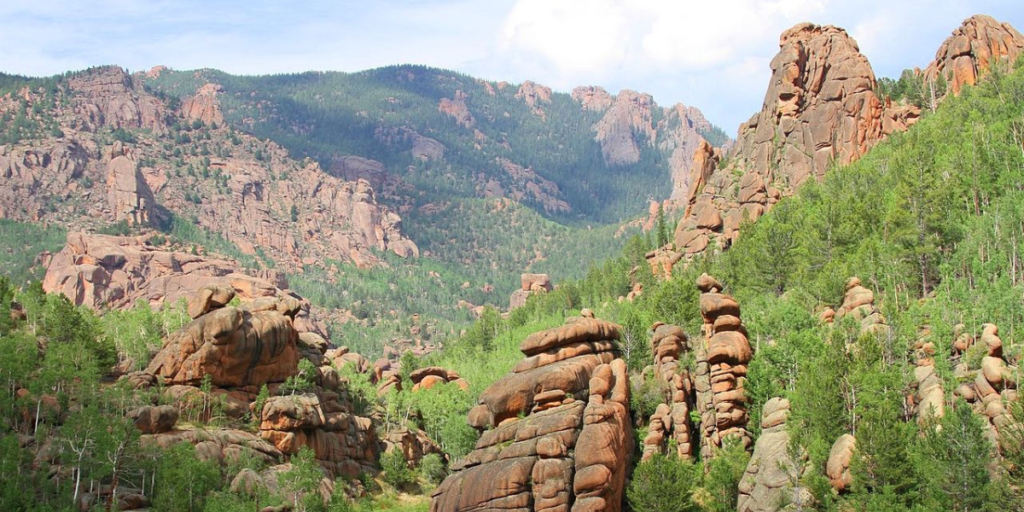
The Lost Creek Wilderness Loop offers a challenging and diverse backpacking experience in the heart of Colorado’s Lost Creek Wilderness. The loop is a picturesque trail system that winds through a mesmerizing landscape of unique rock formations, lush forests, meadows adorned with wildflowers, and babbling creeks.
It’s called “Lost Creek” because the creek wanders under boulder fields and rocks, making it difficult to keep track of as it winds through the wilderness.
The Lost Creek Wilderness Loop can be accessed from various trailheads, but the Goose Creek Trailhead is one of the most popular starting points. Located approximately 60 miles southwest of Denver, reaching the trailhead involves a scenic drive through the foothills.
The loop comprises several interconnected trails, providing backpackers options for different trip lengths and difficulty levels. The most common route covers approximately 25 to 30 miles, but depending on your preferences, more extended or shorter variations are possible.
One of the highlights of this wilderness area is the exceptional rock formations known as the “Lost Creek Wilderness granite domes.” These massive granite rocks, sculpted by millennia of erosion, create a surreal landscape that seems straight out of a fiction novel. The imaginative names of some of these formations, such as “The Sphinx” and “The Castle,” add to the charm.
You’ll encounter several creek crossings, adding an element of adventure to the journey. Yes, you will get wet. Some crossings may require careful navigation, especially during the spring snowmelt or after heavy rains. Take your time, and scout for safer opportunities.
On the bright side, it’s never hard to find water, so you can keep your pack light(er).
3. Colorado Trail
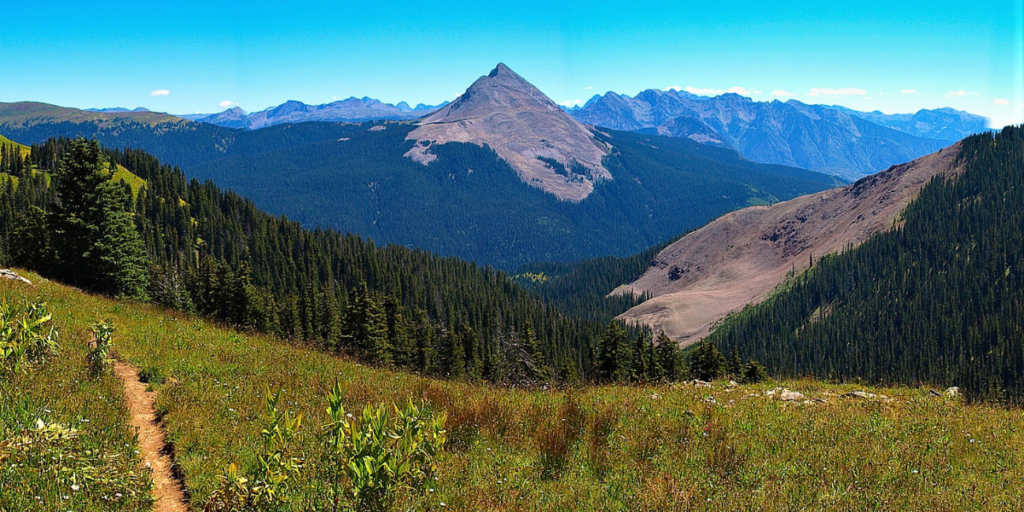
The Colorado Trail is a legendary long-distance trail that spans over 500 miles, winding its way from the outskirts of Denver straight through the heart of the Rockies to Durango. If you want to see the best of what Colorado has to offer, this is the backpacking trail for you.
The trail is divided into 28 segments, each varying in length and difficulty. Ranging from relatively easy sections appropriate for day hikers to challenging portions for experienced backpackers, the Colorado Trail caters to adventurers of all levels.
Hikers on the Colorado Trail will experience dramatic elevation changes, with several high mountain passes exceeding 12,000 feet. This means weather conditions can change rapidly, and it’s crucial to be prepared for sudden temperature drops, afternoon thunderstorms, and even snow in higher elevations (even during the summer).
Water sources can be scarce in some segments, especially during dry seasons. Do your research to plan ahead, and pick up a copy of the Colorado Trail Guidebook. It’s regularly updated and covers everything you need to know to survive your trip.
The trail offers numerous opportunities for backcountry camping, but hikers must follow Leave No Trace principles and abide by established regulations for camping in designated areas. Some segments may require permits, so it’s crucial to research and plan ahead.
4. Maroon Bells Wilderness
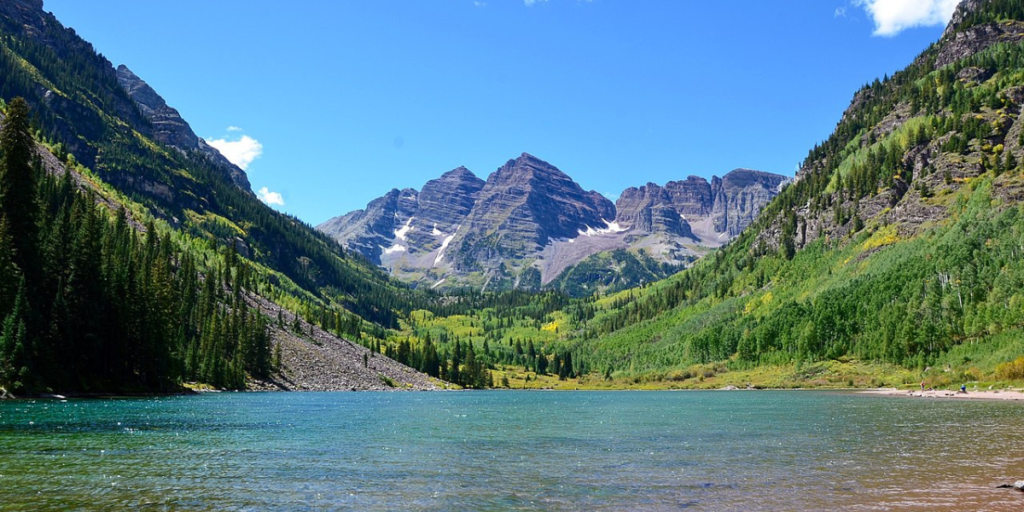
The Maroon Bells Wilderness offers a wide range of hiking trails catering to different skill levels and interests. From short day hikes to multi-day backpacking trips, there’s something for everyone.
Popular routes include the Maroon-Snowmass Trail, West Maroon Trail, and the Four Pass Loop, a challenging but incredibly rewarding 27-mile circuit that takes you over four high mountain passes.
However, everyone wants to go backpacking in the Maroon Bells Wilderness, so you’ll need to get in line and fight to earn yourself a permit. Some adventures want to backpack to beautiful alpine lakes, others want to do the Four Pass Loop, and many want to bag the area’s iconic (and scary) 14-thousand-foot peaks.
5. Wild Basin, Rocky Mountain National Park
Wild Basin is the lesser-visited area of Rocky Mountain National Park. It can get busy, but it’s far less crowded than Bear Lake Road and the northern areas of the park—yet, it has so much to offer. However, you have to work a bit more for everything.
There isn’t a shuttle to drop you off at every lake and waterfall.
Located on the southeastern side of Rocky Mountain National Park, Wild Basin is accessible through a separate entrance station. From the trailhead, visitors can choose from a variety of hiking trails, each offering its own unique charm and adventure.
Wild Basin is an excellent place for backcountry camping, with several established campsites available for anyone seeking a more immersive wilderness experience. Permits are required for backcountry camping and can be obtained through the Rocky Mountain National Park’s backcountry office.
I’ve backpacked to Thunder Lake, and it’s a relatively gradual trail that meanders through most of the basin. Thunder Lake is a gem, and we had the whole lake to ourselves when we visited. It serves as a great base camp for hiking (or climbing) Mt. Alice and Chiefs Head Peak. We also threw in Tanima Peak, just for fun.
6. Ice Lake Basin
Backpacking at Ice Lake Basin is a true alpine adventure, offering hikers a glimpse into one of Colorado’s most strikingly beautiful and pristine wilderness areas. Situated near the town of Silverton in the San Juan Mountains, Ice Lake Basin is renowned for its awe-inspiring turquoise-colored lakes, rugged mountain peaks, and breathtaking wildflower meadows.
The trailhead to Ice Lake Basin is accessible from the South Mineral Creek area, just a short drive from Silverton. The journey to the basin begins with a moderate ascent through a dense forest, gradually revealing glimpses of the surrounding peaks and valleys.
Eventually, you’ll make your way up to Ice Lake, a beautiful blue lake with rugged, craggy peaks surrounding it. From here, you can find a camp spot, and you can also go climb Class 2 Vermillion Peak (one of Colorado’s 100 tallest peaks). You can also take a short adventure around the mountain’s corner to Island Lake, a smaller lake with a little island in the middle.
The San Juan Mountains Association (SJMA) recommends camping in the Lower Ice Lake Basin for the following reasons:
- Protecting Fragile Alpine Vegetation: Exercise caution when setting up tents in the Upper Basin, as the delicate alpine vegetation can be easily damaged.
- Challenges of Cat Holes in Alpine Tundra: Digging a cat hole for waste disposal becomes problematic in the alpine tundra, and privacy options are limited.
- Discouraging Fires in the Upper Basin: Fires are highly discouraged in the Upper Basin due to several reasons. Firstly, wood is scarce, necessitating the need to carry it in. Additionally, open fire scars are unsightly and can take years for revegetation.
- Exposure to Elements in the Upper Basin: The Upper Basin lacks tree cover for protection, leaving backpackers exposed to storms and strong winds.
7. Continental Divide Trail
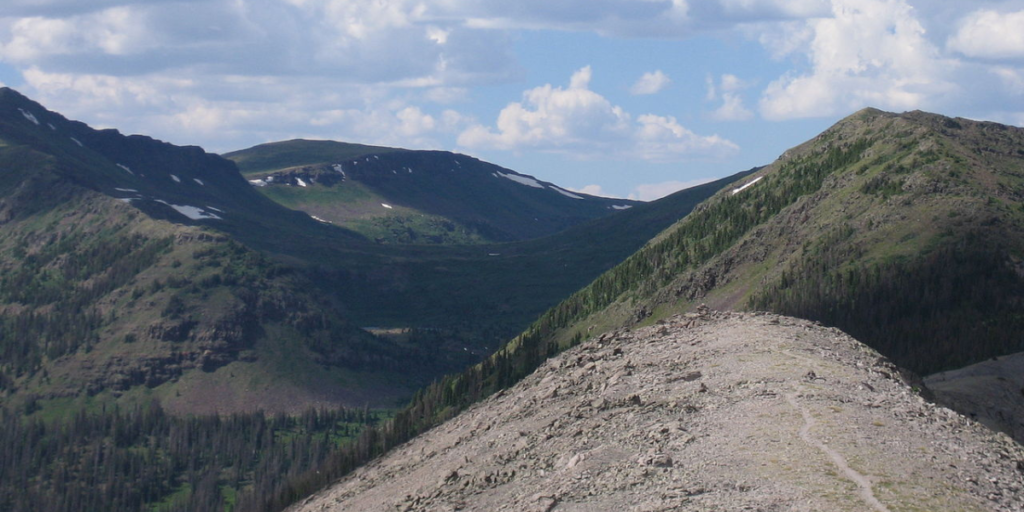
Backpacking the Continental Divide Trail (CDT) is a true backcountry odyssey that takes adventurous hikers on an epic journey along the spine of the Rocky Mountains.
Stretching over 3,100 miles from Mexico to Canada, the CDT offers an unparalleled wilderness experience, immersing backpackers in diverse landscapes, rugged terrains, and some of the most remote and unspoiled areas in the United States.
Colorado contains a large portion of the CDT, offering unique opportunities to camp in fantastic backcountry settings. However, be aware of each area’s specific regulations and permit requirements. Due to the trail’s remote nature, self-reliance and Leave No Trace principles are essential to minimize your impact on the environment.
8. Conundrum Hot Springs
Backpacking to Conundrum Hot Springs is a rewarding journey with rushing creeks, views of rugged mountain ridges, and (of course) natural hot springs.
The trailhead to Conundrum Hot Springs begins at the Conundrum Creek Trailhead, located near Aspen, Colorado. The trail winds through dense forests and wildflower-laden meadows.
After a challenging 8.5-mile hike, you’ll arrive at Conundrum Hot Springs. Here, you’ll find two natural hot spring pools. You get to soak in the warm, mineral-rich waters while gazing at the epic alpine scenery—it really doesn’t get better than this.
You might even feel refreshed on your descent hike back to Aspen…maybe.
9. Lone Eagle Peak, Indian Peaks Wilderness
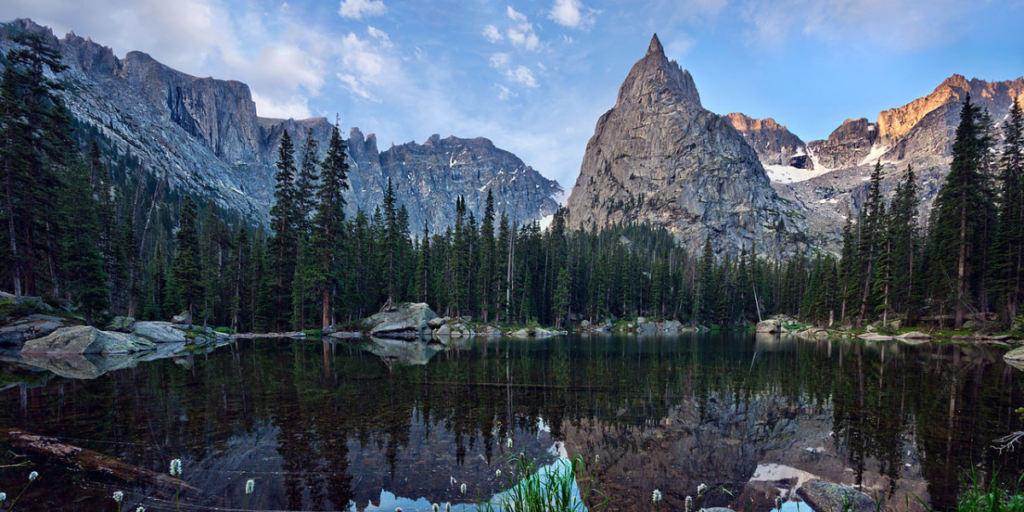
The journey to Lone Eagle Peak typically begins at the Monarch Lake Trailhead near Granby, Colorado. The trail winds through dense forests and opens up to reveal stunning vistas of the surrounding peaks and valleys.
Stop by Mirror Lake and Crater Lake for awesome views of Lone Eagle Peak reflecting in the water. This majestic granite spire rises dramatically from the alpine landscape—it looks like something out of a movie.
The Indian Peaks Wilderness is known for its remoteness, providing a sense of isolation and solitude that connects hikers with the raw beauty of nature. While the trail is popular among adventurers, the vastness of the wilderness ensures that you can find solitude, too.
Camping opportunities abound in the Indian Peaks Wilderness, offering backpackers the chance to spend the night beneath the starlit skies. Obtain the necessary permits for overnight stays and adhere to Leave No Trace principles to protect the fragile alpine environment.
10. Crested Butte to Aspen
This multi-day trek offers backpackers a chance to immerse themselves in the untamed beauty of the Maroon Bells-Snowmass Wilderness and the Elk Mountains while connecting two mountain towns.
The adventure begins in the charming town of Crested Butte, where the West Maroon Pass trailhead awaits. The most popular route is the West Maroon Trail, which takes hikers through a lush valley adorned with wildflowers and towering peaks. Another option is the East Maroon Trail, providing a slightly different but equally scenic route.
Plan transportation logistics in advance, as the trailhead and endpoint are in different locations. Shuttles and private transportation services are available between Crested Butte and Aspen, letting you enjoy a no-stress point-to-point journey.
11. South Colony Lakes
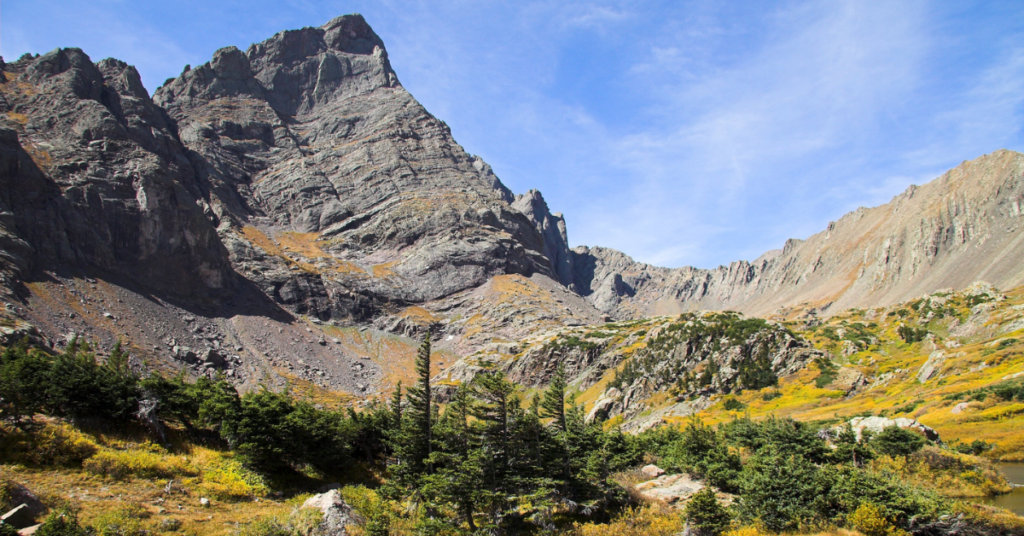
The trailhead to South Colony Lakes is accessible from the South Colony Lakes Road near Westcliffe, Colorado. The initial part of the trail takes hikers through dense forests, gradually opening up to reveal spectacular views of the surrounding mountains.
South Colony Lakes is the gateway to two of Colorado’s most challenging and iconic 14ers: Crestone Needle and Crestone Peak. You can also bag Humboldt (another 14er) or do a little bit more adventuring to get Columbia Point (a centennial).
You’ll find plenty of backcountry campsites close to Lower South Colony Lakes. You can camp up at the Upper South Colony Lakes, but the area is above treeline and exposed to the elements.
12. Zirkel Circle
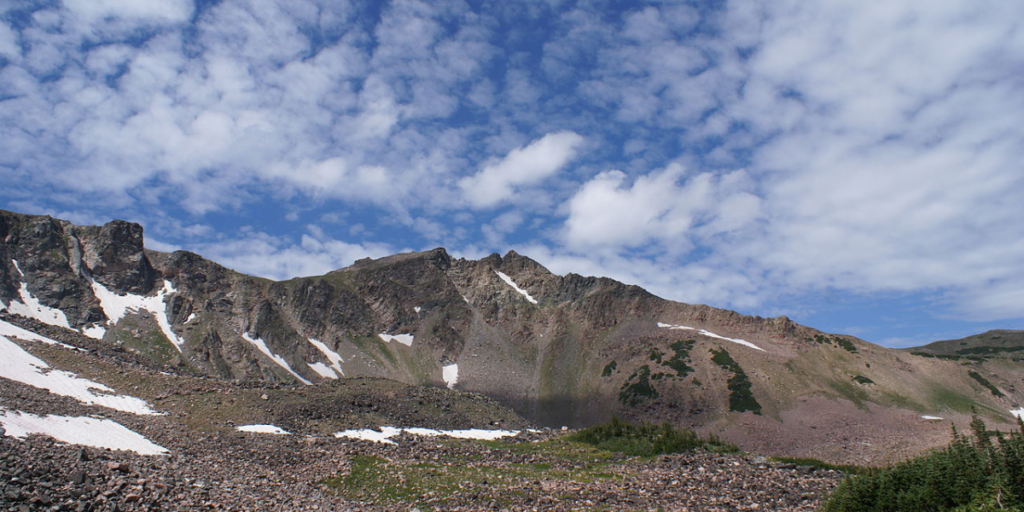
This iconic loop trail offers backpackers the chance to experience the raw beauty of the Rocky Mountains, with alpine lakes, rugged peaks, and diverse landscapes that showcase the essence of Colorado’s remote wilderness.
The Zirkel Circle typically starts from the Slavonia Trailhead, near the town of Steamboat Springs. The loop covers approximately 10 miles, passing through some of the most picturesque areas of the Zirkel Wilderness. You’ll get amazing views of Mount Zirkel and pass by Gilpin Lake and Gold Creek Lake on your loop through the wilderness.
13. Rainbow Trail
The Rainbow Trail stretches approximately 100 miles as it takes hikers from Salida all the way to the Sangre de Cristo mountain range. The Rainbow Trail can be accessed from various trailheads, but the most popular starting point is near the town of Salida, Colorado. The trail is divided into several sections, each offering its own unique scenery and challenges.
Backpackers can camp in designated areas along the trail or utilize backcountry shelters in some sections. Backpacking the entire length of the Rainbow Trail requires thorough planning and organization. Arrange transportation and resupplies accordingly to ensure a smooth and successful journey.
Embarking on a backpacking expedition along the Rainbow Trail offers an unforgettable experience in the heart of the Colorado wilderness. The trail’s diverse landscapes, mountain vistas, and opportunities for solitude make it a genuine adventure for backpackers.
14. Colorado National Monument Traverse
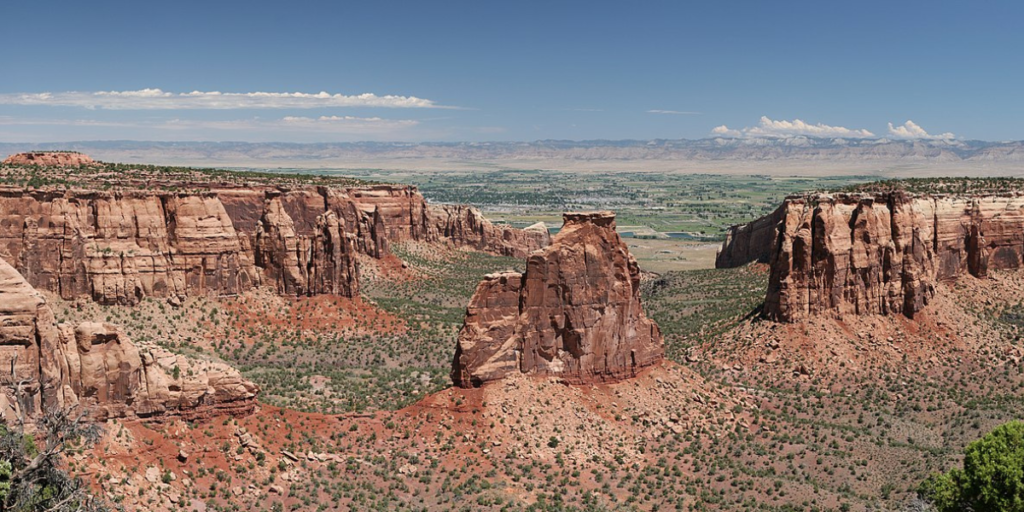
The Colorado National Monument Traverse starts at the park’s east entrance, near the town of Grand Junction. Hikers will follow a combination of established trails and off-trail routes to traverse the entire length of the monument.
As you venture through the monument, you’ll encounter a super-cool display of geology, with massive red sandstone formations, steep canyons, and striking rock spires. The terrain can be rugged, and hikers should be prepared for some scrambling and challenging sections. Carry a detailed map, a GPS device, and a compass to navigate effectively.
The monument has several designated backcountry camping areas, allowing backpackers to spend the night amidst the canyons. The desert environment of the Colorado National Monument can be harsh, with hot temperatures during the day and cooler temperatures at night. Be prepared for sudden weather changes, carry sufficient water, and protect yourself from the sun.
15. Sand Ramp Trail, Great Sand Dunes National Park
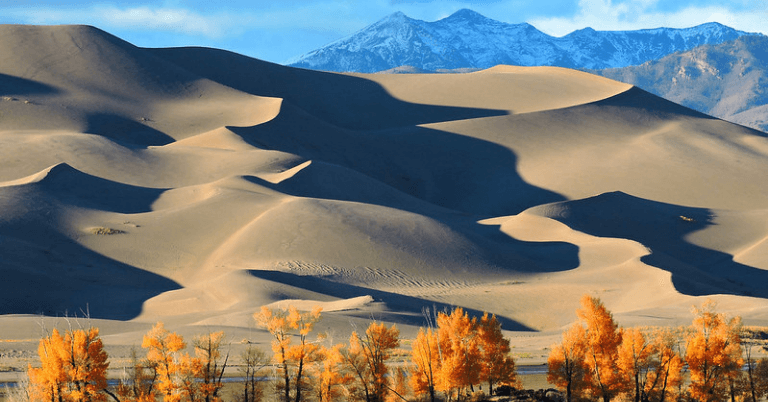
Backpacking the Sand Ramp Trail in Great Sand Dunes National Park is an adventure that takes backpackers through the tallest sand dunes in North America. This lesser-known trail takes hikers through diverse landscapes, from the sandy dunes to the rugged mountains—you won’t find that in many other places on the planet.
The Sand Ramp Trail begins at the Mosca Pass Trailhead on the east side of Great Sand Dunes National Park. While the trail mostly avoids dunes, prepare to get sandy. The Sand Ramp Trail rewards hikers with stunning vistas that provide panoramic views of the vast dune fields, the towering Sangre de Cristo Mountains, and the sweeping San Luis Valley.
Find Something Shorter Than a Backpacking Adventure
Looking for something more tame than a backpacking trip? Don’t worry—Colorado has that, too. Check out our guide to the Best Places to Camp in Colorado for a mix of glamping, yurts, campgrounds, and other backcountry adventures.

